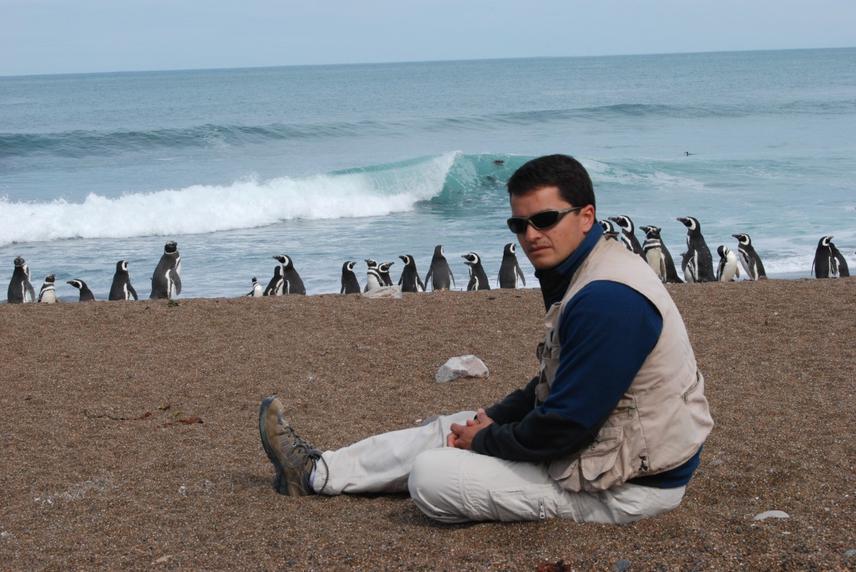Pablo García-Borboroglu
Other projects
7 Dec 2006
Conservation and Biology of an Endemic Flightless Marine Duck in Patagonia, Argentina
6 Sep 2007
Planning and Implementation of Coastal/Marine Protected Areas in Patagonia, Argentina: Proposing Alternatives to Solve Critical Aspects
This project aims to produce knowledge and take direct action to improve conservation and management of penguins, contributing to assure a sustainable tourism that supports local economies in Patagonia.

Pablo at a penguin colony in Patagonia.
The Magellanic penguin is the most emblematic seabird species in Patagonia, and a main touristic highlight for Argentina. The understanding of its population dynamic and ecology is crucial for conservation, and therefore important for regional economies. Even though important pieces of information had been collected from Patagonia, studies have been restricted to particular locations. However this description is static, and spatial and temporal dynamic approaches are still lacking. Moreover, it is necessary to identify the factors that influence the dynamics of this particular species if integrated conservation tools are to be applied. The only way to achieve this goal is through a more comprehensive approach, within a geographical context and with a dynamical perspective.
Penguins are sensitive to variations in ecosystem structure and processes, caused mainly by climate change, pollution, and overfishing. As top predators, Magellanic penguins are key constituents of SW Atlantic marine ecosystems, and are indicators of its oceanic and coastal health. Temperate penguin species, including the Magellanic penguin, have also been altered by climate variation through the increase in the frequency and intensity of environmental cycles, such as the El Niño Southern Oscillation. Since June, massive mortalities of starving penguins migrating from Patagonia, have been reported in Brazil. In addition, marine oil activities and spill risks are getting more intense within the breeding distribution but also along in the migration routes off Argentina, Brazil and Uruguay. Besides, expanding fisheries I the SW Atlantic are increasingly competing with penguins. All these factors are posing threats to the populations.
This project will increase our knowledge about the state and dynamic of its population, updating colony size, trend, dispersal and breeding performance, from a regional perspective encompassing the population at Central and Northern Patagonia. I aim at producing population dynamic models from a metapopulation approach to explain the behaviour of the population in the past and have a better understanding of how populations may respond to different management or natural scenarios.
In addition, given the dramatic increase in tourist visitation at Punta Tombo, the largest colony in the world, I will propose strategies to improve its management. Particularly, I will contribute with the Government to the implementation of its recently approved management Plan, mainly as a member of its Advisory Committee. Penguins, as a charismatic flagship species group, can create public and political interest and generate support. They can be a vehicle for integrated ocean conservation, and allow the protection of many other marine species and their habitats through ecosystem-based marine conservation planning.